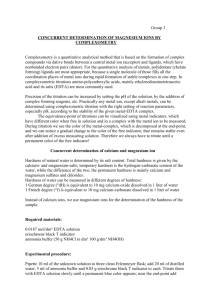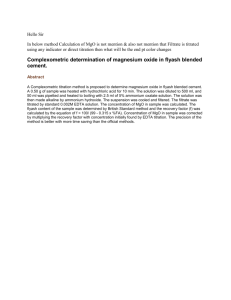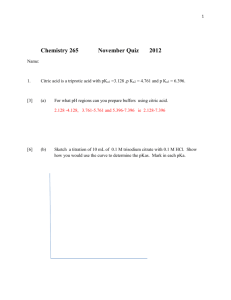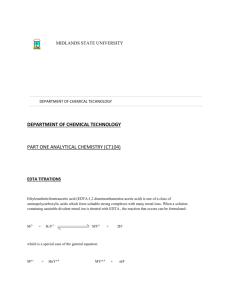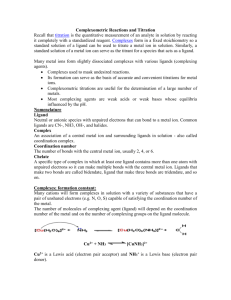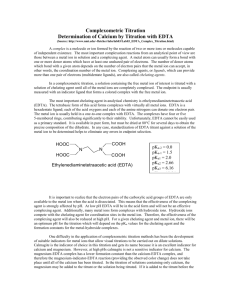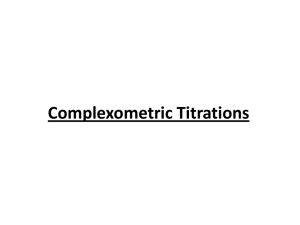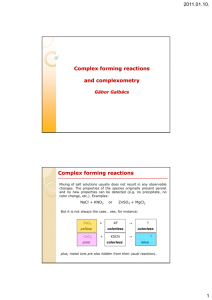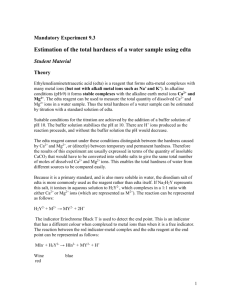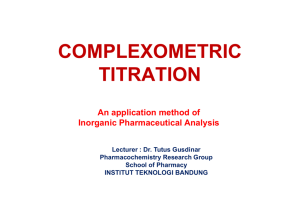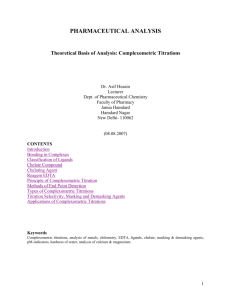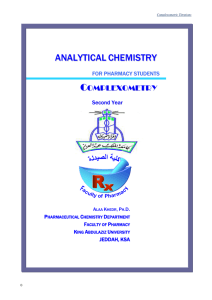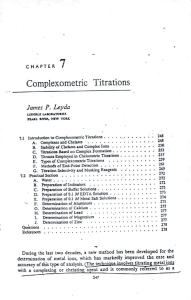lab_4._in_250chem
advertisement
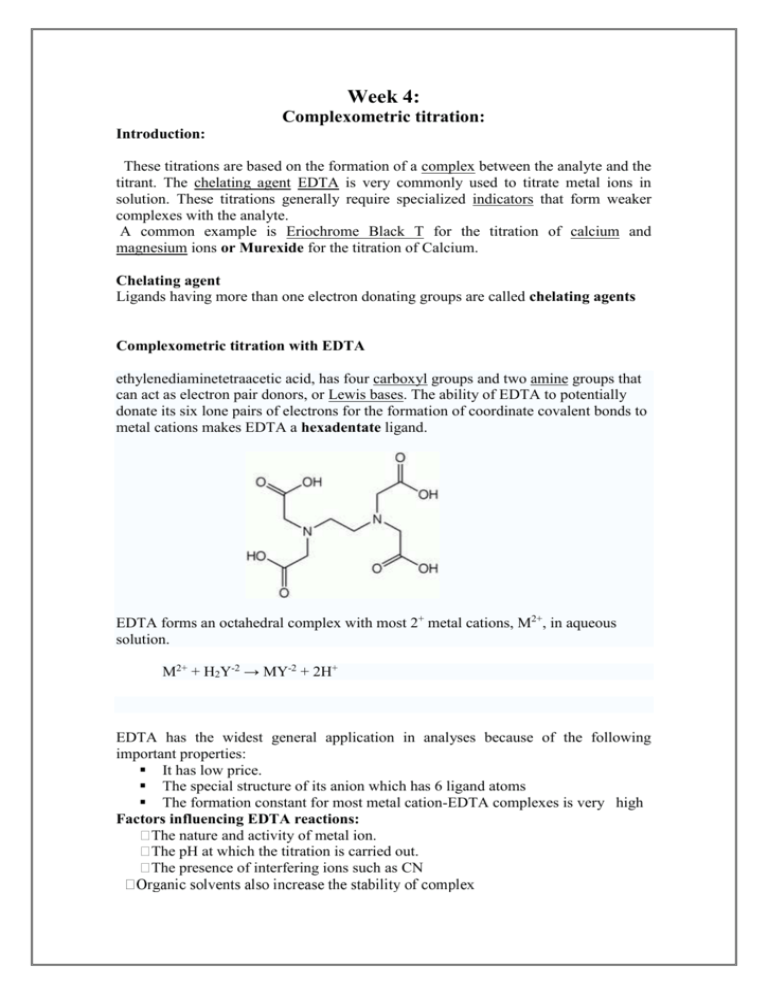
Week 4: Complexometric titration: Introduction: These titrations are based on the formation of a complex between the analyte and the titrant. The chelating agent EDTA is very commonly used to titrate metal ions in solution. These titrations generally require specialized indicators that form weaker complexes with the analyte. A common example is Eriochrome Black T for the titration of calcium and magnesium ions or Murexide for the titration of Calcium. Chelating agent Ligands having more than one electron donating groups are called chelating agents Complexometric titration with EDTA ethylenediaminetetraacetic acid, has four carboxyl groups and two amine groups that can act as electron pair donors, or Lewis bases. The ability of EDTA to potentially donate its six lone pairs of electrons for the formation of coordinate covalent bonds to metal cations makes EDTA a hexadentate ligand. EDTA forms an octahedral complex with most 2+ metal cations, M2+, in aqueous solution. M2+ + H2Y-2 → MY-2 + 2H+ EDTA has the widest general application in analyses because of the following important properties: It has low price. The special structure of its anion which has 6 ligand atoms The formation constant for most metal cation-EDTA complexes is very high Factors influencing EDTA reactions: �The nature and activity of metal ion. �The pH at which the titration is carried out. �The presence of interfering ions such as CN EDTA Determination of Total Water Hardness Purpose: Determine the hardness in tap water samples. Water hardness is an expression for the sum of the calcium and magnesium cation concentration in a water sample. These cations form insoluble salts with soap, decreasing soaps cleaning effectiveness. They also form hard water deposits in hot water heaters. The standard way to express water hardness is in ppm CaCO3 which has the formula weight of 100.1 g/mole. Procedure: 1-Transfer a100 ml of tap water by graduated cylinder to the conical flask. 2-Add 1ml of buffer solution (PH10) and little particles of EBT indicator. 3-Titrate by standard solution of EDTA (0.01M), till the first color change (wine red to Blue). 4-Calculate the total water hardness as concentration of CaCo3 in ppm. Copper Analysis by Complexometric Titration The complexing agent will be ethylenediaminetetraacetic acid (EDTA) in the form of its disodium salt, EDTA forms complexes with many metal This particular method can only be used in the absence of such ions as Ca2+, Ni2+, etc. The reaction of complexation is: Cu2+ (aq) + (EDTA)2–(aq) → Cu(EDTA)2– (aq) + 2H+1(aq) The stoichiometry is one metal cation to one EDTA anion. The indicator used for the titration is called murexide. This indicator is highly colored and will complex with the copper ion to give different colored species. During the titration, the EDTA2– forms a more stable complex and frees the indicator, which then displays its original color. The appearance of the free indicator means that all metal ions have been complexed by EDTA, which signals the end point. Procedure: 1-Pipette 10 ml of CuSO4.5H2O to the conical flask. 2- add 1 ml of NH3 , 10 ml of distilled water and the Murexide indicator. 3- Titrate by 0.01M of EDTA.till the first color change. 4- calculate the concentration of Cu.




